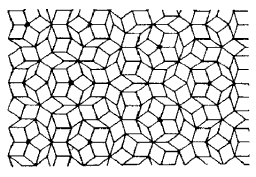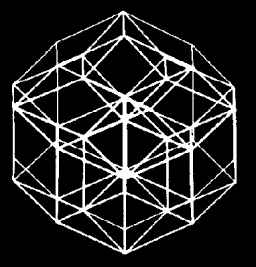 |
Science Frontiers ONLINE No. 39: May-Jun 1985 |
|
|
Forbidden Matter
When a hot mixture of aluminum and manganese, iron or chromium is squirted onto a spinning water-cooled copper wheel, the molten metal freezes into a thin, metallic ribbon. If it is cooled too fast, a metallic glass results; cooled too slowly, it forms normal metal crystals. But when conditions are just right, icosahedral crystals cluster together in nodules a few microns in size. These icosahedral crystals are not normal in the sense that they have five-fold symmetry. In fact, to a crystallographer, these crystals are the equivalent to ESP in psychology.
All the rules of crystallography insist that icosahedral crystals should not exist. One scientist reacted in this way:
"All my training has been with the assumption that crystals are periodic. Now, almost everything has to be reexamined."
Actually, the icosahedral crystals are "quasi-periodic"; that is, they are completely regular only over small distances. Nevertheless, there are hints that these materials that should not exist have remarkable structural and electronic properties.
(Peterson, Ivars; "The Fivefold Way for Crystals," Science News, 127:188, 1985.)
 Two-dimensionsal quasiperiodic geometry (Penrose tiling) with five-fold symmetry formerly thought to be impossible in nature. |
 The tricontahedron with 30 faces is the basis of three-dimensional quasiperiodic structures with five-fold symmetry. |